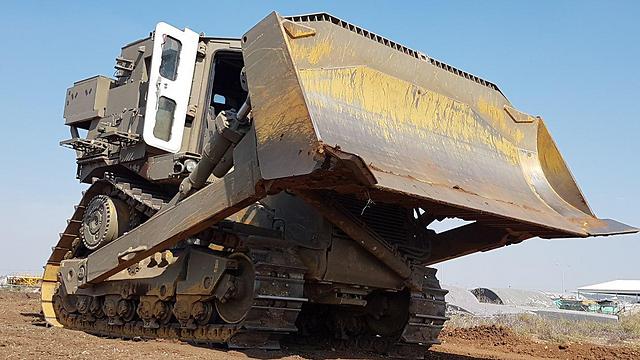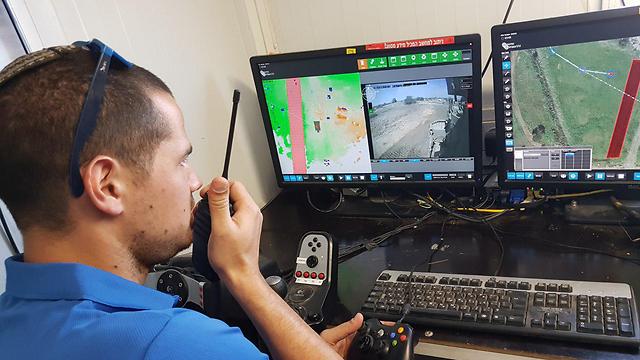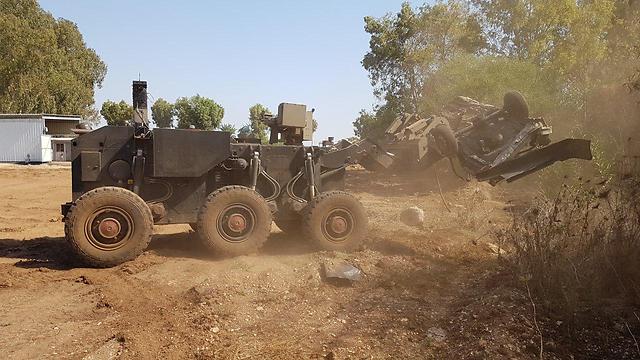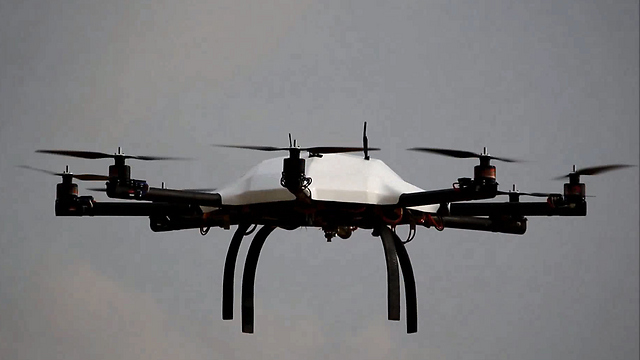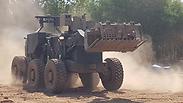

IAI develops unmanned ground vehicles of the future
Israel Aerospace Industries concludes development on two new unmanned grounds vehicles: D9 Panda bulldozer and Robattle, an engineering vehicles-robot hybrid; D9 Panda capable of maneuvering on rough terrain, pinpointing mines and constructing batteries to defend forces in enemy territory; Robattle can grow, decrease size according to mission parameters, also boasts outstanding maneuverability; 'Vehicles capable of changing rules of engagement,' says IAI VP.
The Israel Aerospace Industries' (IAI) testing centers recently concluded development on the army's largest UGVs (unmanned ground vehicles) to date: gigantic bulldozers and engineering robots. The IDF has already shown interest in the two vehicles, and may purchase them in the future.
Ynet documented the new unmanned D9 Panda bulldozer, an armored engineering vehicle weighting at least 65 tons, and Robattle, an engineering tool-robot combo, controlled remotely and capable of carrying tasks independently.
The D9 variant was fitted with a special system, unique for its versatility: its operating mechanism and technological elements may be applied to other armored vehicles—such as tanks and APCs—thereby further reducing the need to send soldiers out to the field.
The unmanned D9 displayed capabilities previously only thought possible if the vehicle was operated by a Combat Engineering Corpsman, with maneuverability on rough terrain, pinpointing mines and explosive devices on the forefront of a ground force and constructing batteries made of dirt to defend forces in enemy territory.
The new Pandas are also capable of extracting other armored vehicles stranded under fire in enemy terrain and of demolishing homes housing hiding terrorists.
The Panda is fully remotely controlled, allowing its operator to drive and navigate the UGV, operate its blade and control its various mechanical attributes, such as engine temperature and oil pressures.
The Panda's "smaller," sprightlier brother is the Robattle, which appears to be a real life Transformer: it contracts or expands according to the needs of the force operating it, has claws capable of picking up and shaking large suspicious objects such as cars suspected of being filled with explosives and has outstanding maneuverability in mountainous or obstacle-fraught terrain.
The two vehicles may be operated in two fashions using advanced wireless communications, cameras and radars that may be installed on them: feeding them data for running independent missions with remote accompaniment and supervision or full manual operation from a secure remote trailer while carrying out missions.
"The robots' development is based on finding a reply to the question of how we'd like to fighting in the battlefield of the future, one that will demand rapid responses and operations with greater attendant risks due to heavily populated warzones," explained the IAI's Executive Vice President of Land Systems and former GOC Central Command Maj.-Gen. (res.) Gadi Shamni.
"These systems will provide commanders an edge when trying to promulgate their strategy to outsmart the enemy, thereby carrying out missions more effectively and precisely without sending a plant or battalion of soldiers out in harm's way. A robot, on the other hand, may be sent out to 'rouse' the battlefield, collect intelligence and fire weapons," Shamni added.
The Panda and Robattle vehicles are also intended to be used in routine security operations such as opening traffic routes near the borders. They both boast dozens of sensors capable of scanning their environments to a radius of dozens, even hundreds, of meters to locate the enemy and bypass any obstacles.
"When I speak with commanders, I tell them the future is here. It's not so simple to change how the army operates, but the IDF is one of the leading armies in the world when it comes to UGVs," elucidated Shamni.
'Redefining the rules of engagement'
Indeed, the IDF has yet to reach critical mass on unmanned vehicles, except for its air forces. The Israeli Air Force has been running most of its flying operations using unmanned aircrafts, but the army's land and sea arms have yet to catch up.
The Israeli Navy does operate small, unmanned vessels, but mostly for scant field security missions. Land forces are similar in that regard, using unmanned vehicles for more than a decade, but mostly for special engineering forces, albeit ones who have racked up an impressive—yet classified—record in the past few years.
Whether due to a conservative approach to warfare or to only partial confidence in unmanned vehicles, the army is lagging behind.
In the past year, however, the IDF underwent a sort of resurgence, with more and more UGVs entering development for the IDF with Ministry of Defense accompaniment, and some even reaching operational fruition, such as a dwarf submarine and large multirotor drones for ground forces.
In a recent recruit exercise in the north, for example, the IDF tested out drones capable of extracting wounded soldiers as well as unmanned hummers and transport trucks.
"Today any vehicles can be made autonomous. This ability allows us to redefine the rules of engagement," concluded Shamni.














